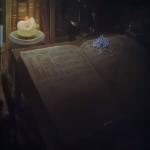|
|
| "The Maiden's Blackmoor" released!!! |
|
Posted by: Rafael - 02-20-2010, 04:43 AM - Forum: News Archive
- Replies (2)
|
 |
Ladies and gentlemen,
I proudly present to you the first publication this community has spawned:
The Maiden's Blackmoor
A short written companion to The Last Fantasy Campaign, containing information on our past games, on the concrete changes we made to our setting,
AND the big "Maiden's Timeline", the backbone of the setting we use, containing about all information about our game that we can spare.
We hope you enjoy it and eagerly await your feedback!
Yours,
Rafael
|
|
|
|
| Whoo! Its getting crowded! |
|
Posted by: Havard - 02-18-2010, 03:03 PM - Forum: Zvenzen's Freehold - General Chat
- No Replies
|
 |
Quote:In total there are 6 users online :: 3 Registered, 1 Hidden and 2 Guests [ Administrator ] [ Moderator ]
Most users ever online was 30 on Aug 18, 2006 6:12 pm
Registered Users: Aldarron, Bahumuth, Havard, Rafael
This data is based on users active over the past five minutes
Havard
|
|
|
|
| Let's write DA5 City of Blackmoor! |
|
Posted by: Havard - 02-18-2010, 03:00 PM - Forum: General Blackmoor Discussions
- Replies (5)
|
 |
DA5 is that legendary module, written by Dave Ritchie, but never published. Let's speculate to what the module might have contained.
I am guessing an updated map of the City, based on the version in the FFC. The map from the Domesday Book may also have been used as a reference, though Arneson stated that the FFC version is more correct. I also expect a more detailed description of the town, including the various buildings.
Secondly, a map and description of Castle Blackmoor would be in there. The FFC has details on the rooms of the Castle and the Town Map gives us at least some idea of what the Castle layout is like.
Thirdly, the Dungeons of Castle Blackmoor. We have already seen this product in the 3E line. Is it possible that this was what DA5 would have been like, perhaps focusing on the 10 levels from the FFC?
Finally, with Ritchie's products we know there would be some overarching story to the module rather than more of a setting product. This may have involved the dungeon of Castle Blackmoor, or perhaps a final confrontation with the Wizard's Cabal (who are evil in the DA version)?
What do you think?
Havard
|
|
|
|
| Space Ships in Blackmoor |
|
Posted by: Havard - 02-15-2010, 04:24 PM - Forum: General Blackmoor Discussions
- No Replies
|
 |
I have collected alot of information, mainly stuff from Greg in my latest blog entry on Space Ships in Blackmoor, incorporating the references to the Star Empires Game and DA3 as well as links back to the original Temple of the Frog.
As I was writing, I couldnt remember the name of the player who played St. Stephen? Wasn't he one of the original Blackmoor players?
-Havard
|
|
|
|
| Ritchie? |
|
Posted by: aldarron - 02-14-2010, 11:38 AM - Forum: General Blackmoor Discussions
- Replies (2)
|
 |
David James Ritchie is mentioned a lot in regards to his collaboration with Dave Arneson for TSR. Doing a web search I see he also authored some wargames in the early '80's and co authored Dragonquest. Beyond that, not much to be found. So who is David Ritchie? Why was he the one who was choosen to work with Arneson? What is his story? Anybody know?
|
|
|
|
|